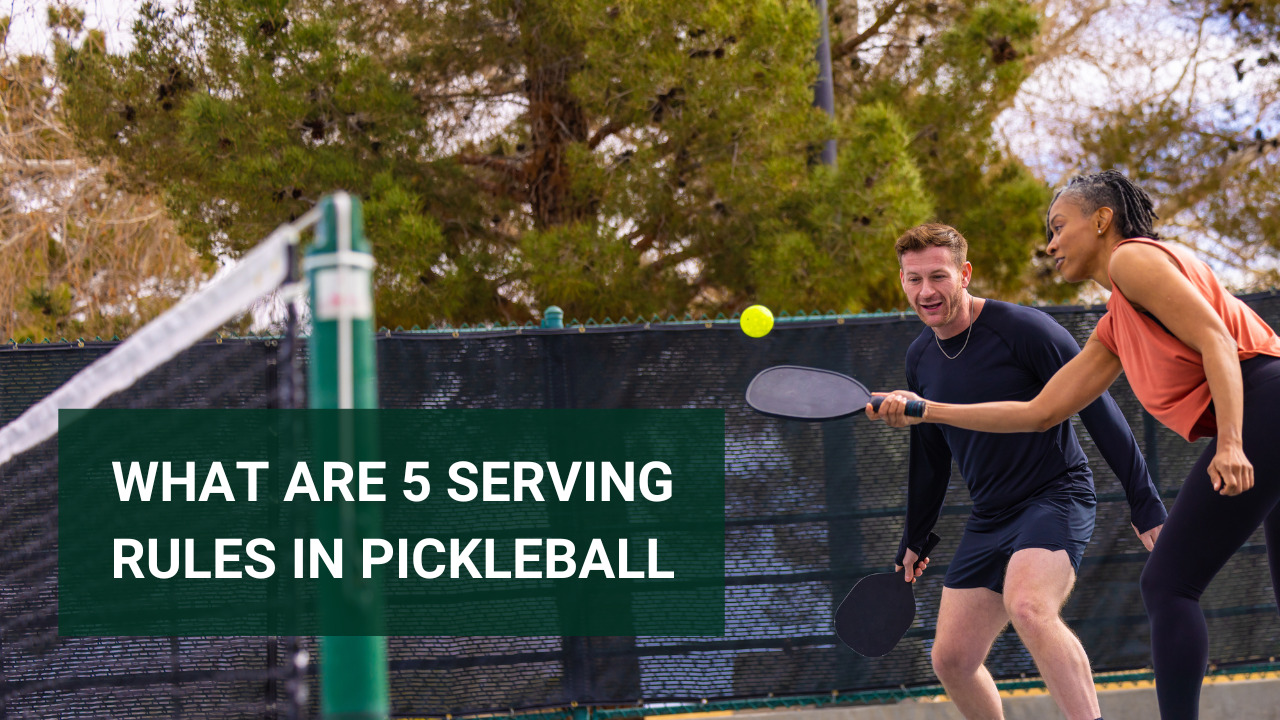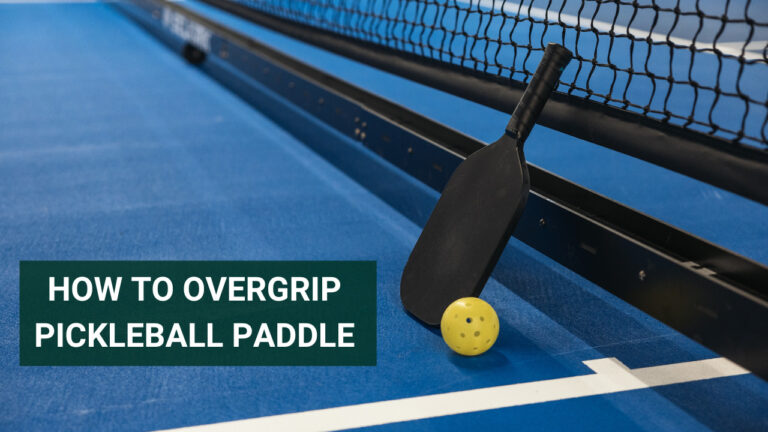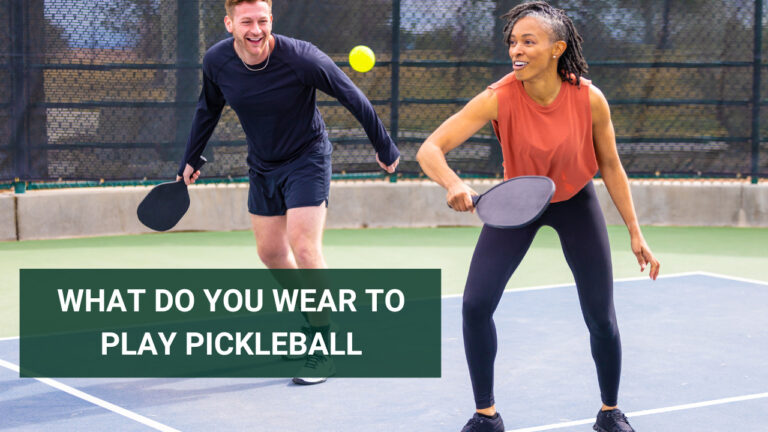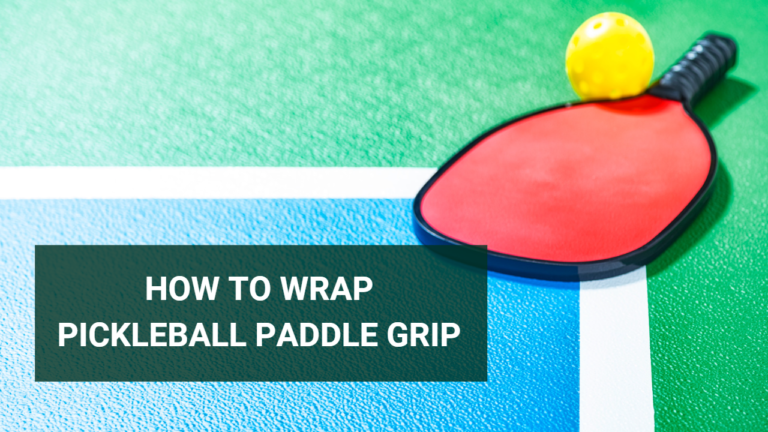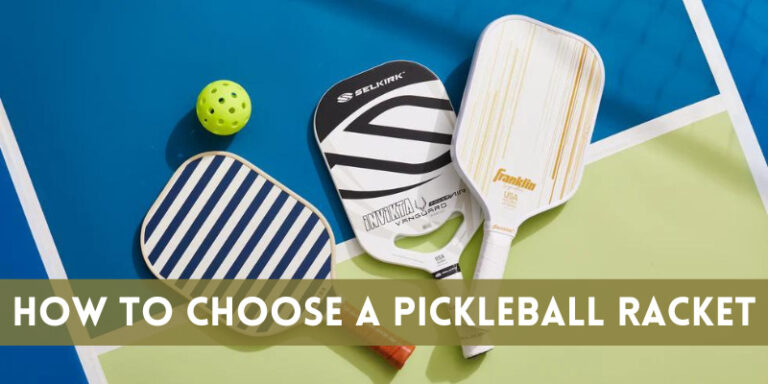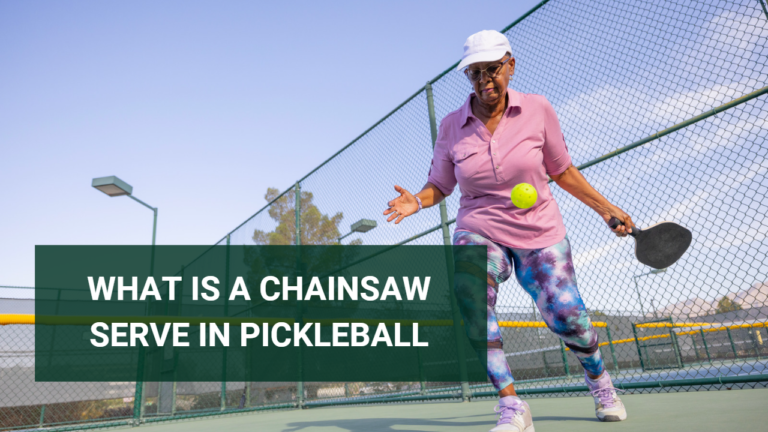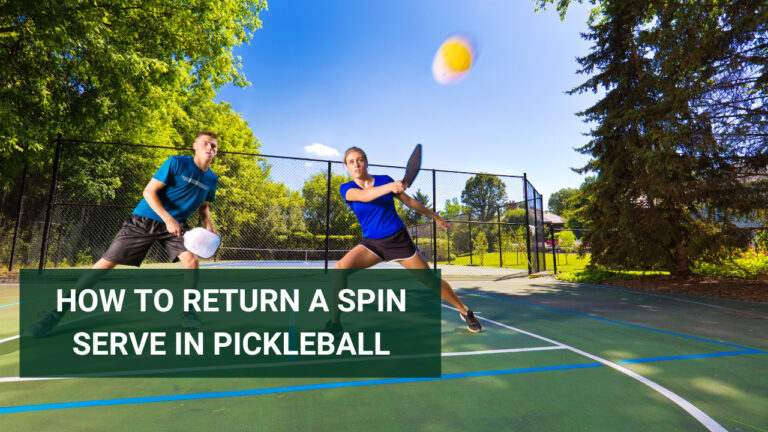What Are The 5 Serving Rules In Pickleball – Complete Guide
Are you feeling a bit puzzled about the serving rules in pickleball? Don’t worry, we’ve got you covered!
Luckily, we’ve compiled the 5 key serving rules in pickleball that will help you master this vital part of the game. By understanding and following these rules, you’ll gain an advantage on the court and ensure fair play.
So, if you’re ready to boost your serving skills and gain a competitive edge in pickleball, let’s dive deeper into what are the 5 serving rules in pickleball.
What are the 5 serving rules in pickleball – Guide
Serving is a crucial aspect of pickleball that sets the tone for every rally. To ensure fair play and maintain the integrity of the game, there are five key serving rules that all players must follow:
Understanding the Basics of Pickleball Serving
Serving in pickleball is the act of starting a point by hitting the ball over the net into the opponent’s court. To serve well, you need to focus on three key elements: grip, stance, and body position.
The grip should be continental for versatility. A staggered stance helps with balance and power, while facing the net with the non-dominant side forward optimizes reach.
A good serve is crucial as it gives you an advantage, putting your opponents on the defensive and disrupting their rhythm. Mastering serving is essential for success in pickleball.
Rule 1: The Serve Must Be Made Diagonally
The diagonal serving rule in pickleball requires players to serve the ball diagonally across the court. This rule promotes fairness and strategic play by forcing opponents to cover more ground from the start.
By serving diagonally, players can create advantageous positions and exploit their opponent’s weaknesses. Following this rule ensures an exciting and level playing field in pickleball.
Rule 2: The Serve Must Clear the Non-Volley Zone (NVZ)
The non-volley zone (NVZ), also known as the kitchen, is an important area in pickleball. When serving, the ball must clear the NVZ and land in the opponent’s court. This rule ensures a fair game and emphasizes strategic shot placement.
To consistently clear the NVZ, focus on controlled serves, adjust trajectory for higher arcs, practice for consistency, and consider deep placement near the baseline. Mastering NVZ clearance during your serve will give you a competitive advantage in pickleball.
Rule 3: The Serve Must Land Within the Service Court
The service court in pickleball is where the serve must land. If the serve goes out of bounds or hits the non-volley zone, it’s considered a fault. Consequences of an out-of-bounds serve include losing the serve and giving an advantage to the receiving team.
To improve accuracy and consistency, practice target placement, develop a consistent toss, maintain a smooth swing motion, pay attention to footwork, and mentally prepare before each serve.
Serving within the service court is essential for a successful start and gaining an advantage in pickleball.
Rule 4: The Serve Must Be Made Underhand
The underhand serving rule in pickleball requires players to serve the ball using an underhand motion. The underhand serve offers advantages of control, accuracy, and strategic placement. Common misconceptions include the belief that underhand serves lack power.
To develop an effective underhand serve technique, focus on a fluid motion, proper weight transfer, experimenting with paddle angle, consistent toss placement, and practicing control and placement within the service court.
Mastering the underhand serve allows for precise placement and strategic advantage in pickleball.
Rule 5: The Serve Must Be Made Below Waist Level
The waist-level serving rule in pickleball requires serving below waist level. This promotes fairness and prevents excessive power. Difficulties include generating power and speed.
Solutions include focusing on paddle position, incorporating leg drive, developing a compact swing, practicing consistent tosses, and drills for technique improvement. Serving accuracy and placement should be emphasized. Adhering to the waist-level serving rule maintains fairness and strategic play in pickleball.
By adhering to these essential serving rules in pickleball, players can create an environment of fairness and maintain consistent gameplay throughout matches.
How To Properly Serve In Pickleball
Serving in pickleball is a crucial aspect of the game, and it’s important to understand the rules and techniques involved. To ensure that your serves are legal and effective, follow these guidelines:
Start Behind The Baseline
When serving, you must begin behind the back line on your side of the court. This ensures fairness and allows for consistent play.
Use an Underhand Motion
Unlike tennis, pickleball requires players to use an underhand serve. This promotes control and reduces the risk of powerful shots that could potentially harm opponents.
Serve Diagonally
The serve must be directed diagonally across the net into the opponent’s service court. It should clear all non-volley zone lines before being returned.
Avoid Foot Faults
Make sure both feet remain behind or touching the baseline until after you’ve made contact with the ball during your serve. Stepping over this line results in a fault.
Maintain a Proper Height Level
Your paddle head must be below your wrist when striking the ball during a serve; otherwise, it will result in an illegal shot.
By adhering to these serving rules in pickleball, you’ll not only stay within regulation but also improve your overall gameplay skills! Remember to practice consistently to refine your technique and increase accuracy with each serve.
The Benefits Of Following The Serving Rules
The benefits of following the serving rules in pickleball are numerous and can greatly enhance your gameplay experience. By adhering to these rules, you not only ensure fair play but also contribute to a more enjoyable and competitive match.
- Promotes fairness among players
- Ensures equal opportunity to serve and score points
- Maintains consistency in gameplay
- Prevents disputes and confusion during matches
- Enhances sportsmanship on the court
- Develops better control and effectiveness in serving
- Sets a positive example for other players, especially newcomers
- Contributes to a community built on fairness and respect
Complying with serving rules sets a positive example, fostering a fair and respectful community.
What To Do If You Break A Serving Rule
If you find yourself breaking a serving rule in pickleball, don’t panic! It happens to the best of us. Here are some steps you can take to rectify the situation and get back on track.
- Acknowledge your mistake. It’s important to be honest with yourself and accept that you made an error. This will help prevent any frustration or arguments with your opponents or fellow players.
- Next, communicate with your partner and opponents. Let them know that you recognized the mistake and apologize if necessary. Open communication is key in maintaining a positive playing environment.
- Once you’ve acknowledged the mistake and communicated with others, it’s time to make things right. Take note of the specific rule that was broken and ensure that it doesn’t happen again in future serves.
- Focus on moving forward. Dwelling on past mistakes can hinder your performance in the game. Instead, learn from the experience and use it as motivation to improve your serving technique.
Remember, everyone makes mistakes at times; what truly matters is how we handle them. By following these steps, you’ll be able to navigate through any serving rule mishaps with grace and sportsmanship
Conclusion
So there you have it – mastering the 5 serving rules in pickleball is crucial for a fair and competitive game. By understanding and adhering to the rules of diagonal serving, clearing the non-volley zone, landing within the service court, executing underhand serves, and serving below waist level, you’ll be well-prepared to excel on the court.
So, embrace these rules, practice your serves, and get ready to enjoy the thrill of pickleball while playing by the book. Good luck and have a fantastic time serving up some pickleball fun!
FAQs
What are the rules for serving in pickleball?
The rules for serving in pickleball include serving diagonally, clearing the non-volley zone, landing within the service court, using an underhand serve, and serving below waist level.
How many rules are there in pickleball?
Pickleball has a total of 16 official rules that govern various aspects of the game, including serving, scoring, court dimensions, and player conduct.
How many types of serves are there in pickleball?
Pickleball offers a variety of serves to choose from. The most common types include the soft or dink serve, the drive serve, and the lob serve. Each serve has its own strategic purpose and is used based on the player’s preference and situation.
What is Rule 11 in pickleball?
Rule 11 in pickleball states that the server and receiver must maintain their respective positions until the ball is legally in play. This rule ensures a fair start to the rally and prevents players from gaining an unfair advantage.
What are fouls in pickleball?
Fouls in pickleball refer to violations of the rules that result in a loss of point or the loss of serve. Examples of fouls include stepping into the non-volley zone while volleying the ball, volleying the ball before it bounces, or hitting the ball out of bounds.
What is the two-shot rule in pickleball?
The two-shot rule in pickleball applies when both teams have successfully executed their third shot as a drop or dink shot. At this point, players are allowed to volley the ball or hit it on the fly. This rule is designed to promote longer rallies and strategic shot selection.
